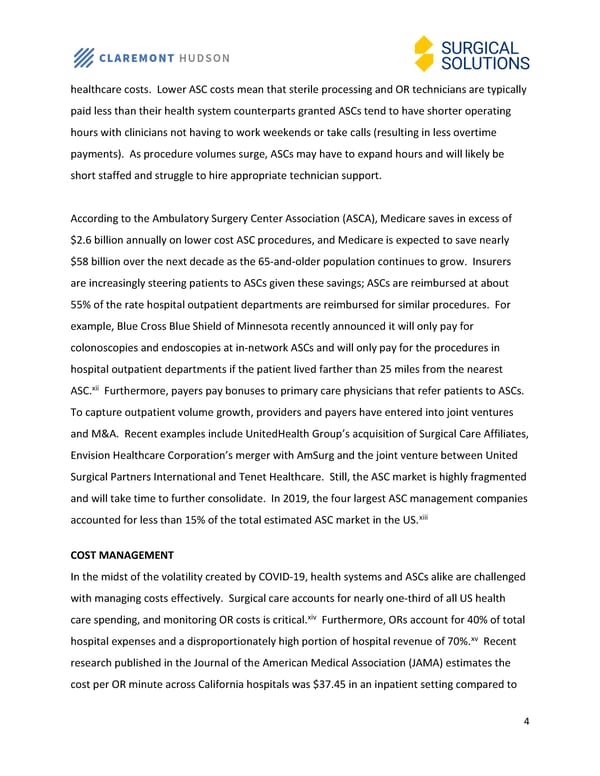healthcare costs. Lower ASC costs mean that sterile processing and OR technicians are typically paid less than their health system counterparts granted ASCs tend to have shorter operating hours with clinicians not having to work weekends or take calls (resulting in less overtime payments). As procedure volumes surge, ASCs may have to expand hours and will likely be short staffed and struggle to hire appropriate technician support. According to the Ambulatory Surgery Center Association (ASCA), Medicare saves in excess of $2.6 billion annually on lower cost ASC procedures, and Medicare is expected to save nearly $58 billion over the next decade as the 65-and-older population continues to grow. Insurers are increasingly steering patients to ASCs given these savings; ASCs are reimbursed at about 55% of the rate hospital outpatient departments are reimbursed for similar procedures. For example, Blue Cross Blue Shield of Minnesota recently announced it will only pay for colonoscopies and endoscopies at in-network ASCs and will only pay for the procedures in hospital outpatient departments if the patient lived farther than 25 miles from the nearest xii ASC. Furthermore, payers pay bonuses to primary care physicians that refer patients to ASCs. To capture outpatient volume growth, providers and payers have entered into joint ventures and M&A. Recent examples include UnitedHealth Group’s acquisition of Surgical Care Affiliates, Envision Healthcare Corporation’s merger with AmSurg and the joint venture between United Surgical Partners International and Tenet Healthcare. Still, the ASC market is highly fragmented and will take time to further consolidate. In 2019, the four largest ASC management companies xiii accounted for less than 15% of the total estimated ASC market in the US. COST MANAGEMENT In the midst of the volatility created by COVID-19, health systems and ASCs alike are challenged with managing costs effectively. Surgical care accounts for nearly one-third of all US health xiv care spending, and monitoring OR costs is critical. Furthermore, ORs account for 40% of total xv hospital expenses and a disproportionately high portion of hospital revenue of 70%. Recent research published in the Journal of the American Medical Association (JAMA) estimates the cost per OR minute across California hospitals was $37.45 in an inpatient setting compared to 4
 Operating Room Insourcing Versus Outsourcing Page 3 Page 5
Operating Room Insourcing Versus Outsourcing Page 3 Page 5